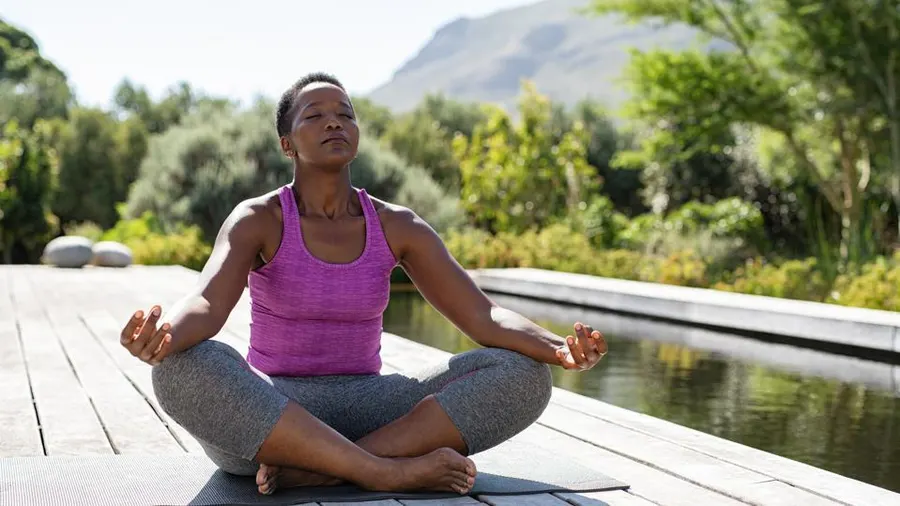Meditation is a personal development technique that has been practiced for thousands of years. Today, meditation is a popular way to improve health, regulate stress, and cultivate mental toughness. There are many types of meditation, and they all have their unique benefits.
One technique that is rarely discussed is standing meditation, also known as Zhan Zhuang (pronounced “Jan Jong”), a dynamic form of standing meditation from ancient China. According to Chinese history, hunters and gatherers would use the art of standing like a poll while hunting — this would bring animals closer.
Aside from being an effective hunting method, Yang Yang, who is the founder of the Center for Taiji and Qigong Studies in the US, describes this technique as a simple yet powerful exercise to experience a deep balance of the mind and body, enhance energy, mental clarity, and internal strength.
This is an excellent meditation for improving your productivity and bringing more aliveness into everything you do.
What is Standing Mediation?
In ancient China, Taoism was the dominant philosophical system based on a text titled Tao Te Ching, which translates to “The Classic of the Way and the Power (or Virtue).” The Taoist system of practices is called Qigong (or Chi Gung), meaning “life energy cultivation”.
There are thousands of practices within the Qigong system (3,600 is often the number given). It’s made up of specific stretching, movements, stances, forms, and breathing techniques.
Qi Gong uses various standing postures to promote energy flow and help the body get strong and healthy. Just like any other type of meditation, standing meditation also quiets the mind. According to some Chinese monks, practicing standing meditation properly will lead to a long and healthy life of vitality and energy.
How to Practice Qigong
There are many crucial aspects associated with the correct posture of standing meditation. Do not worry too much about getting it right the first time, but try to focus on the details when you practice.
This meditation can be done in between ten to thirty minutes.
1) The first step is to find a quiet and peaceful place. This can be as easy as finding an empty room in your house, or a quiet place outside.
If you do it inside, facing a window is ideal because you can get a view of nature outside. Being around nature can keep you inspired, and add to your peace of mind.
2) Start by warming up before getting into the posture. You can do a few light stretches and body movement beforehand.
3) Stand with your feet shoulder-width apart and toes pointing forward, firmly grounded. This will initiate proper energy flow arising from your grounded position.
4) Your head is straight up above your fully erect spine. While gazing straight in front, touch the roof of the mouth with your tongue. With your shoulders relaxed, bend your knees slightly to support the natural weight of your body.
5) Keep your hands and arms loose and relaxed by your sides. Tuck your chin inward and roll it up toward the top of your head. This opens the area where your spine meets your skull.
6) Take deep slow breaths in through your nose, imagining the breath reaching deep into your lower body before exhaling through the mouth. Try to remain stable, and focus on the energy of your body.
For most people, the first day of practicing standing meditation is not simple. You may start with ten minutes during the first few days. Increasing the length of your standing mediation will be easier as you practice.
You can add a few more minutes to your session every time until you achieve a good balance. Qi Gong experts suggest standing in this position for at least thirty minutes to allow the qi (chi) to make a full balanced cycle throughout your body.
Benefits of Practicing Standing Meditation
After spending time sitting or going about your daily activities, so much pressure is exerted on your back. One of the benefits of standing meditation is that it can help improve your overall posture, which will also enhance the quality of your energy throughout the day. Taking a few minutes to practice standing meditation can help to balance out the tension of your muscles.
Apart from the physical benefits of standing meditation, the practice has psychological benefits too. For instance, another benefit of standing meditation is that it can help ease stress and anxiety.
By learning how to bring awareness to your body, this type of active meditation is a great way to send positive signals of tranquil confidence from your mind to your body, helping raise your energy and filter out negative thought patterns. This is a great way to clear the mind before sleep.
For instance, people who regularly practice standing meditation report feeling more confident and in control of life. They also report feeling better equipped to deal with stressful situations better because they know how to detect the signs of tension. When tense, Qi Gong practitioners can dig within, even for a few minutes, and find their points of relaxation.
If you are thinking of practicing standing meditation, all you need to do is start. Reaping all the benefits that come will definitely keep you going!

